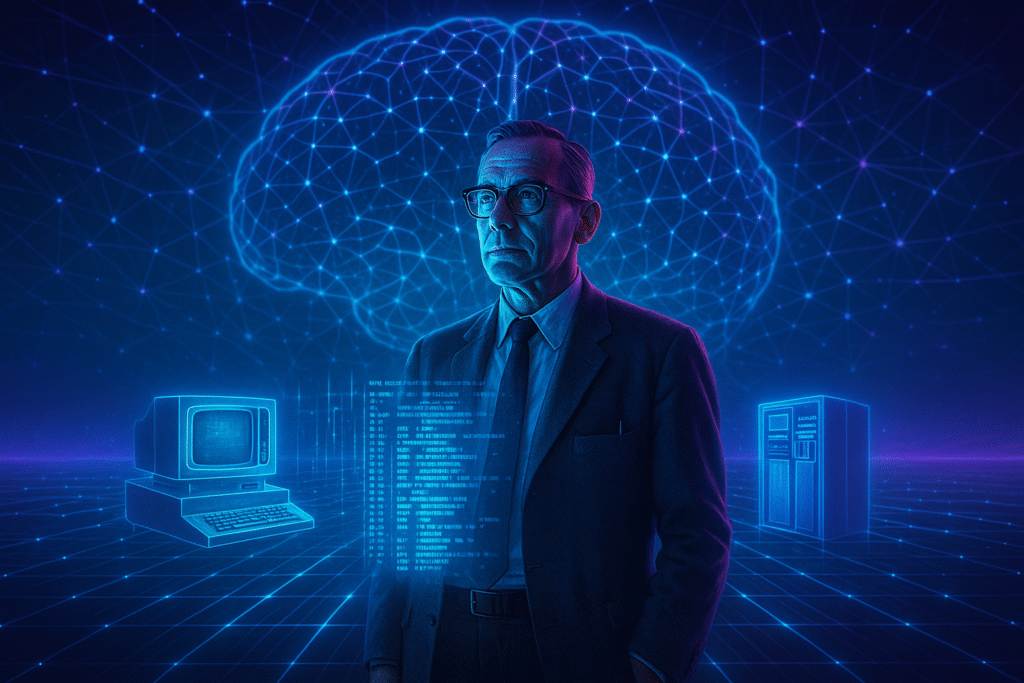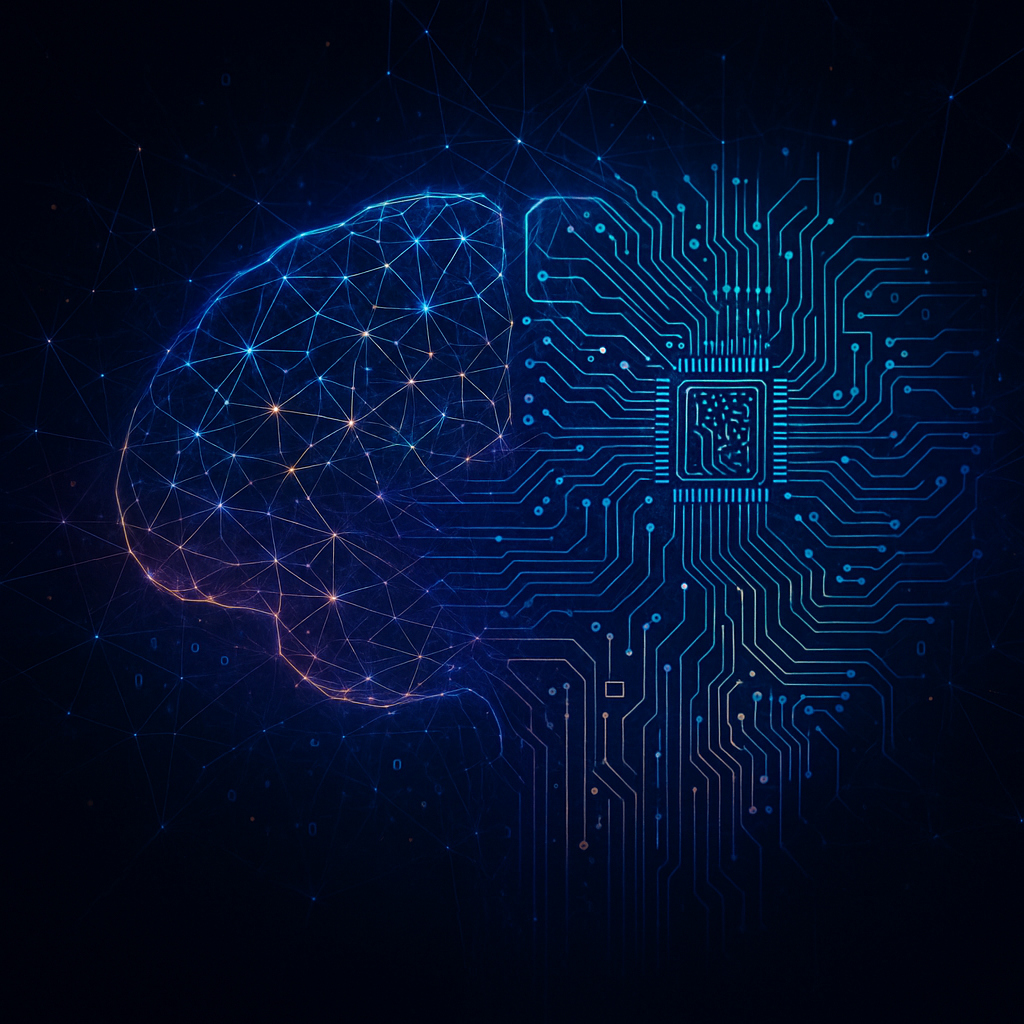
ChatGPT:
The Dream Machine
The Dream Machine, by M. Mitchell Waldrop, chronicles the life of computing pioneer J.C.R. Licklider and how his vision of interactive computing laid the foundations of the modern digital world, including the internet, personal computing, and artificial intelligence. The book also serves as a sweeping history of computing from WWII to the early 1990s, profiling the scientists, engineers, and institutions that turned dreams into reality.
Conclusion
In the end, The Dream Machine reveals that much of what we take for granted—ubiquitous networks, graphical interfaces, and democratized access to information—originated in the ideas of Licklider, a man who believed computers could augment human intellect rather than replace it. His leadership at DARPA’s Information Processing Techniques Office (IPTO) sparked funding and research that seeded the ARPANET, the direct ancestor of the internet. The book shows how a combination of visionary thinking, government investment, and tight-knit collaborations among researchers brought forth innovations like time-sharing, packet switching, and personal computing. Waldrop emphasizes that Licklider’s ability to inspire and connect people was as important as his technical insight. The story closes by acknowledging that while today’s technology often strays from Licklider’s ideal of empowering individuals, the core dream of human-computer symbiosis still drives progress.
Key Points
🧠 J.C.R. Licklider’s Vision: He imagined computers as partners in thought rather than mere calculating machines.
🧬 Human-Computer Symbiosis: Lick’s 1960 paper laid out a roadmap for interactive computing that shaped decades of research.
💰 DARPA Funding: Through ARPA’s IPTO, Licklider directed critical funding that enabled breakthroughs like time-sharing and ARPANET.
🌐 Birth of the Internet: The ARPANET project evolved into today’s internet, demonstrating the power of networked collaboration.
⌨️ Time-Sharing Systems: Moving beyond batch processing, time-sharing let multiple users interact with a computer at once.
🏛️ Academic Hubs: MIT, Stanford, and Carnegie Mellon became crucibles of innovation, where teams built on each other’s work.
👨💻 Rise of Personal Computing: The dream of accessible computing inspired pioneers like Engelbart, Kay, and Gates.
🔗 Culture of Collaboration: The community’s open exchange of ideas was crucial to rapid advances.
📝 Interface Innovations: Early work in graphical interfaces and hypertext pointed toward the modern web.
🌟 Enduring Influence: Licklider’s legacy continues to shape AI, networks, and our relationship to machines.
Summary
- Origins in Military Research
The book begins with WWII and the Cold War, when computing emerged as a military necessity, first for codebreaking and ballistics, then air defense. - Licklider’s Early Career
Licklider trained as a psychologist but became fascinated by information theory and computers, blending disciplines in novel ways. - Man-Computer Symbiosis
His landmark 1960 essay proposed interactive computing—machines aiding human thought, not replacing it—which was radical at the time. - Time-Sharing Breakthroughs
Early computing was batch-oriented, but innovators like John McCarthy and teams at MIT proved that many users could share a single machine interactively. - DARPA’s IPTO
At ARPA, Licklider set up the Information Processing Techniques Office, channeling funding to ambitious projects and connecting brilliant researchers. - ARPANET Emerges
The desire to link remote computers led to packet switching, and by 1969 the ARPANET was operational, the precursor to the internet. - Doug Engelbart and the Mouse
Engelbart’s Augmentation Research Center developed the mouse, hypertext, and video displays—ideas ahead of their time. - Xerox PARC and Personal Computing
Many ARPA alumni went to Xerox PARC, creating the Alto, the first true personal computer with a graphical interface. - Commercialization and Cultural Shifts
The 1980s saw commercialization: Apple and Microsoft brought computing to the masses, though not always in the user-empowering spirit Lick envisioned. - Legacy and Reflection
Waldrop closes by reflecting on how Licklider’s principles—collaboration, openness, and augmentation—still inform today’s technology.
Q
What is The Dream Machine about?
The Dream Machine tells the story of J.C.R. Licklider and how his vision of interactive computing led to the creation of modern technologies such as the internet, time-sharing, graphical interfaces, and personal computing.
Q
Who was J.C.R. Licklider?
He was an American psychologist and computer scientist who became the first director of DARPA’s Information Processing Techniques Office, where he championed the idea that computers could be partners in human thinking.
Q
What is human-computer symbiosis?
This was Licklider’s concept that humans and computers working together could solve problems neither could tackle alone—a partnership rather than automation.
Q
Why was DARPA important in this history?
DARPA (then ARPA) funded nearly all the foundational research that made interactive computing and networking possible, including the ARPANET, which became the internet.
Q
How did time-sharing change computing?
Time-sharing allowed multiple users to simultaneously interact with a single computer, moving beyond slow batch processing and paving the way for personal computing.
Q
What role did ARPANET play?
ARPANET was the first large-scale packet-switched network, connecting universities and research labs, demonstrating that networking computers could revolutionize collaboration.
Q
Who were other key figures in the book?
Doug Engelbart (inventor of the mouse), Bob Taylor, Alan Kay, Ivan Sutherland, and researchers at MIT, Stanford, and Xerox PARC all played critical roles.
Q
What innovations came out of Xerox PARC?
Xerox PARC produced the Alto computer (the first with a graphical interface), Ethernet networking, and many other elements of modern computing.
Q
How did Licklider’s vision influence the internet?
His insistence on connected, interactive systems inspired the development of network protocols, collaborative research, and the cultural norms that shaped the early internet.
Q
Does the book cover commercialization?
Yes—it explains how companies like Apple and Microsoft turned research prototypes into mass-market products, sometimes diverging from Licklider’s ideals.
here’s a clear, balanced critique of The Dream Machine by M. Mitchell Waldrop:
✅ Pros
✔️ Comprehensive History
Waldrop meticulously traces the origins of modern computing across decades, offering readers a sweeping and authoritative narrative.
✔️ Accessible Storytelling
Despite technical topics, the book uses clear prose and engaging anecdotes that make complex ideas understandable for non-experts.
✔️ Rich Character Portraits
Licklider and other pioneers are vividly portrayed, helping readers appreciate their personalities and motivations, not just their inventions.
✔️ Insight into Collaboration
The book does an excellent job showing how teamwork, funding, and institutional culture mattered as much as individual genius.
✔️ Historical Context
By placing computing advances within the Cold War and broader cultural shifts, Waldrop helps readers see why certain developments happened when they did.
❌ Cons
✘ Length and Density
At nearly 500 pages, it can feel overwhelming and repetitive in places, especially for casual readers.
✘ Limited Coverage of Later Internet Culture
The story largely ends before the commercial explosion of the 1990s and early 2000s, so it may feel dated regarding the web’s evolution.
✘ Focus on U.S. Research
The book heavily emphasizes American institutions like DARPA and MIT, with little on European or Asian contributions to computing.
✘ Idealized View of Licklider
Some critics feel the portrayal is almost hagiographic, underplaying flaws or controversies around funding priorities and missed predictions.
✘ Sparse Technical Detail
While accessible, readers wanting deep dives into protocols, code, or hardware engineering may find it too high-level.

